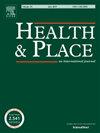Examining the indirect effect of park size on community health via crime risk in Alabama: A cross-sectional mediation model
IF 3.8
2区 医学
Q1 PUBLIC, ENVIRONMENTAL & OCCUPATIONAL HEALTH
引用次数: 0
Abstract
Across the United States and worldwide, communities face significant health challenges, including rising rates of chronic conditions such as obesity, heart disease, and diabetes. Addressing these issues requires comprehensive public health strategies that prioritize the development of infrastructure to support healthier lifestyles. One promising strategy is to expand and enhance public green spaces like urban parks. While numerous studies have examined the relationship between green spaces and physical health, inconsistent findings reveal gaps in current understanding. This study explores the complex relationship between urban park size, neighborhood crime risk, and community physical health in Alabama. Data were collected for 989 urban parks across Alabama using the Trust for Public Land's ParkServe database and city Parks and Recreation Department websites. Park size was measured with geographic information systems data, and crime risk data, including violent and property crimes, were provided by the Environmental Systems Research Institute. Community physical health data were obtained from the PLACES database to assess the prevalence of poor physical health. Our analysis revealed a significant negative total effect (p < .001) and a significant negative direct effect (p < .01), indicating that larger urban park sizes were consistently associated with a reduced prevalence of poor physical health. Additionally, larger urban parks were significantly associated with reduced neighborhood crime risk, which, in turn, was significantly related to a lower prevalence of poor physical health in communities (p < .05). These findings offer important policy insights for future urban planning and public health efforts.
求助全文
约1分钟内获得全文
求助全文
来源期刊

Health & Place
PUBLIC, ENVIRONMENTAL & OCCUPATIONAL HEALTH-
CiteScore
7.70
自引率
6.20%
发文量
176
审稿时长
29 days
期刊介绍:
he journal is an interdisciplinary journal dedicated to the study of all aspects of health and health care in which place or location matters.
 求助内容:
求助内容: 应助结果提醒方式:
应助结果提醒方式:


